The Duchess of Langelais
(USA/Italy/France 1950)
– The Film that never was –
|
|
Since her last film, Two-Faced Woman in 1941, Greta was offered many ideas for possible Comeback-films. Of all the offerings and ideas, only one film was closest to turn into a Production.
Back in late 1948, Garbo signed a one movie deal with producer Walter Wanger. They decided to make a film version of H. Balzac's famous novel, La Duchess de Langelais.
Wanger wanted to shot in Italy and James Mason agreed to play her co-star. Sadly, due of many problems, post-ponings and finally loosing the all important financiers, the film was stopped. Wanger hoped to start a-new but in February 1950, Garbo lost interrest and returned to New York.
After the failure of Duchess, Garbo got many new offerings for Comeback Films b ut the possibility of such a realization was never so close as it was in 1949 with La Duchess de Langelais.
|
| ALTERNATIVE TITLES |
| The Duchess Of Langelais (ENGLAND)
Die Herzogin von Langelais (GERMANY)
La Duchess de Langelais (FRANCE)
The Wicked Duchess (rumored USA Title)
Lover and Friend (suggested USA Title)
|
| FAN ART "MOVIE PROMO POSTER" |

Made by Nici.
|
| PRODUCER |
Produced by Wanger International Produktions (USA)
Co-produced by Scalera Films Productions (ITALY)
Co-produced by Rank Films Productions (ENGLAND)
|
| DISTRIBUTION COMPANY |
| RKO Pictures (suggested)
COLUMBIA Pictures (suggested)
|
CREDITS |
Directed by Max Ophuls.
Produced by Walter Wanger.
Screenplay by
Max Ophuls and Sally Benson
Adaptation by Frances Marion, from the novel by H.Balsac.
Photographed by James Wong Howe.
Max Ophuls suggested Walter Wanger several other artists, such as: Set designer Jean D'Eaubonne and Leon Barsacq, sound mixer Joseph de Bretagne and production manager/assistant director Ralph Baum or Simon Schiffrin and Italian-speaking editor Michael Luciano. Of all of these favored collaborators, only Ralph Baum had been hired before Ophuls' departure.
|
TECHNICAL SPECS |
Technicolor (rumoured)
|
| SCREENTEST GIF |
|
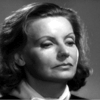
May 1949
|
CAST |
James Mason and Greta Garbo
|
| GARBO'S CHARACTER |
Duchess Antoinette de Navarreins
|
| SCREENTESTS PICTURES - VALENTINE |
|
Test 1: Joseph Valentine (May 5, 1949)
 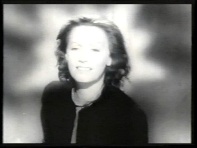 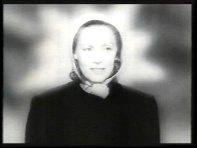 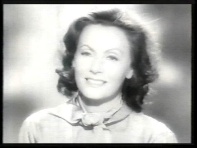
 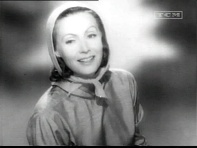 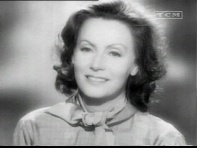 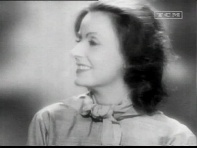
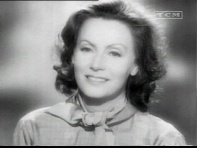  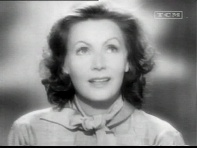 
|
| SCREENTESTS PICTURES - HOWE |
|
Test 2: James Wong Howe (May 25, 1949)
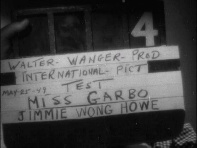 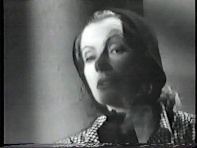  
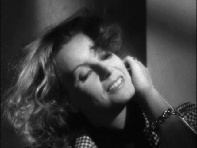  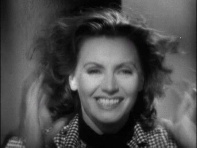 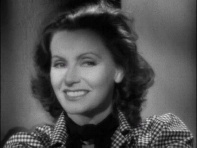
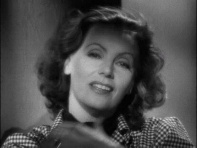   
|
| SCREENTESTS PICTURES - DANIELS |
|
Test 3: William Daniels (May 25, 1949)
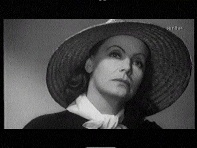 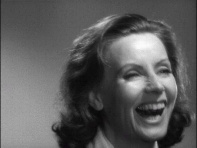 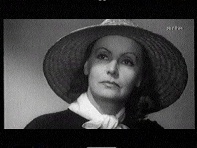 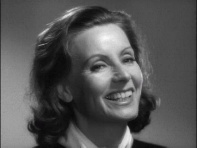
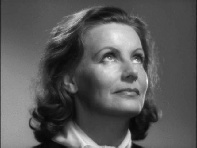 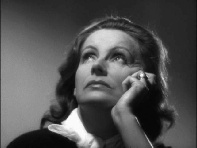 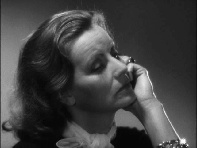 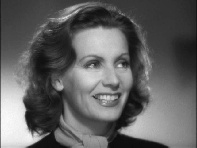
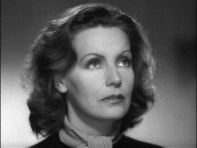 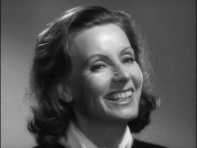  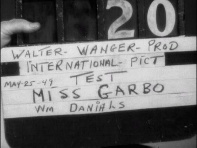
|
FANART - FILM POSTER |
 
Made by Nici.
|
SYNOPSIS |
La Duchesse de Langelais is a story of romance, revenge, and redemption. It tells the story of the heartless and coquette Antoinette de Navarreins - The Duchesse de Langeais. She moves about in the vapid, pleasure-seeking world of the French aristocracy. Antoinette is unhappily married and successfully separated from her husband, the Duc de Langeais. She encounters a newcomer to the court of Louis-Philippe, the Marquis, Armand de Montriveau.
The Duchesse is now poised for an amorous adventure. He suffers with the knowledge that he is being toyed with. But than Armand calls upon a secret group called The Thirteen to help him abduct her. The Marquis wants to & brand her as a temptress. She learns to love at the moment of her greatest humiliation. Her desperate change of heart dooms both of them.
|
| GARBO'S FILMPARTNER |
James Mason was going to be Garbo's Filmpartner in the film. Mason (1909 – 1984) was a three-time Academy Award nominated English actor who attained stardom in both British and American films. Garbo liked Mason and his wife and visited him several times again and played with their kids in the garden.
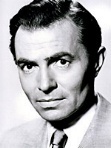
James Mason
Before (and even after) Mason was signed as Garbo's co-star, other many actors were suggested and considered. The list included: Errol Flynn, Louis Jourdan, Lawrence Olivier, Robert Cummings and even Montgomery Clift (unconfirmed).
Max Ophuls suggested Wanger such British players as Jack Hawkins, Frank Allenby, Geoffrey Keen, and Frederick Lester to Wanger, for the Armand de Montriveau part.
|
| ADVERTISING |
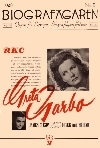
Swedish Advertising, Autumn 1949
|
RELEASED |
First quarter of 1950
|
| MUSIC |
Wanger had the idea to open up the story with a song by French singer Edith Piaf. In the final Screenplay are two scenes in a nineteenth-century café. It shows a world-weary singer acting as a sage. This would mean that Wanger wanted Piaf to appear in the film in a special appearance.
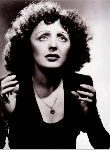
Edith Piaf
|
TRIVIA |
 Filming was planned in the first week of September 1949. Filming was planned in the first week of September 1949.
 George Cukor was first choice for the director part b ut he wasn't available. Later, he begged her not to do the film because he desperately wanted to direct Garbo's Comeback. George Cukor was first choice for the director part b ut he wasn't available. Later, he begged her not to do the film because he desperately wanted to direct Garbo's Comeback.
 The Hays Office found the script unacceptable “Its a story of adultery without any voice for morality”. The Hays Office found the script unacceptable “Its a story of adultery without any voice for morality”.
 Garbo thought that it had been “a bad day” when she signed a contract for the picture. Garbo thought that it had been “a bad day” when she signed a contract for the picture.
 The three Screen-Tests are Garbo's last professional footages. The three Screen-Tests are Garbo's last professional footages.
 It is said that the screentests were discovered in 1989 by Jeff Joseph of Sabucat Productions and brought to public attention by film historian Leonard Maltin. It is said that the screentests were discovered in 1989 by Jeff Joseph of Sabucat Productions and brought to public attention by film historian Leonard Maltin.
 Garbo and Max Ophuls suggested Wanger to film the movie completely in France. Garbo and Max Ophuls suggested Wanger to film the movie completely in France.
|
BACKGROUND STORY |
|
The Producer
|
Like many other Hollywood studios and film Producers in the 1940s, American producer Walter Wanger also wanted to make a Comeback film with Garbo. He arranged a meeting with Greta and Salka Viertel in early 1948 (USA). They discussed a possible film project for Walter Wanger International Productions. This was a new formed production company by Walter Wanger and his partner Eugene Frenke.
Garbo knew Wanger (He produced Queen Christina for MGM in 1933) and belived in him. She signed a “one-movie” deal with his Wanger-International-Company. This was her first movie contract since 1940.
|
| The long search for a possible film story |
The “team” started a long search for possible film material. Garbo's friend Salka suggested Wanger to do a film about George Sand. Wanger liked the idea and wanted to film the movie in France. Salka was hired to write the screenplay and Wanger searched for financiers and a distribution company. In France he found money-givers for the film. The french Financiers Producers liked the idea about George Sand with Garbo and Garbo was loved in France. Another suggestion for a film came from director G.W. Pabst.
Pabst directed Garbo's A Joyless Street (Germany 1925). He wanted to get Garbo for a film adaptation of Homers's Ulysse. Pabst suggested that Garbo should star in a double role, as Penelope and Circe. But Frenke, Wanger's partner, didn't like the idea. He told Wanger that Pabst had a bad reputation in France and that they may would loose the French finanziers. But Salka's George Sand script didn't turn out as good as they hoped. Than, due of some other problems with George Sand, Wanger said it would be a mistake to go on with it.
|
| The Novel |
Wanger, just bought the film rights to the french novel La Duchesse de Langeais. He suggested Garbo the idea to turn this 1834 Balzac novel, into a film. Greta liked the idea. Back in 1942, there was already a, La Duchesse de Langeais, film made. This french film version, directed by Jacques de Barobcelli, starred Edwige Feuillere as the tragic Duchess. Garbo had admiration for Edwige. Wanger arranged a private screening of the film in Paris. The film provided Greta with a clear idea of what to do with her part. This may have grabbed her too, to make this film. Garbo could identify with the Duchess.
|
| Pre-Production |
On March 15, 1949, Garbo signed a new letter of agreement with Wanger-International. They formally switching the focus of their efforts to La Duchesse de Langeais instead of George Sand. Wanger decided to shot the film in Italy. There he could use the cheaper Italian labours production facilities from Cinecittà Studios, the Italian Film city.
Another reason could have been that Wanger already had a possible Italian financier – publisher Angelo Rizzoli. Rizzoli was the leading man of all the comming Italian financiers. Wanger and Rizzoli made a partnership. They were responsible for the largest sum of money of the production investment. Post-Production and Editing would be made in England. Some local scenes were planned to be filmed in and around Paris. Principal photography was set to begin the first week of September 1949, Rome. Film sets were under construction since August 1949. Duchesse was scheduled to be premiered the first quarter of 1950, Balzac's centennial.
The budget was around $225.000 but later was growing to $500.000. Garbo and George Schlee (Greta's companion and some kind of a manager) came to Rome in April 1949. Her job was to meet and charm the Italian financiers, a job she had never been reduced before.
|
| The Financiers |
The Money-Givers were: American Walter Wanger and Eugene Frenke (both producers) for Wanger International Productions (USA). Italian Giuseppe Amato (producer & director) and his partner Angelo Rizzoli (Publisher) from Scalera Films (Italy). The Rothschild family, Garbo's personal friends, also wanted to invest their “frozen” money in France. This money from the Rothschild, was planned to be used for the work on locations in and around Paris. Wanger later also expected a distribution agreement and some investments with a major company. He had talks with Columbia Pictures (USA) and RKO Pictures (USA).
It belive RKO won the worldwide Distribution rights. I'm not sure here! We have a Promo Flyer, which sais that "Garbo is Back" and that it going to be a RKO - Radio Picture. Producer J. Arthur Rank, for Rank Films (England) was also on board. He was going to finance the additional money for the English supporting cast and the English editorial department. But it was the Italian financiers who were most important. Wanger expected an enormous investment for the production in Rome.
|
| The Screen-test |
In Rome, mid April, Garbo had her first meeting with the all important Italian financiers. After the brief meeting in Greta's hotel room they had not been very satisfied. Especially Angelo Rizzoli (from the important publishing family) was very unhappy. She had drawn all the blinds and was wearing a big hat. The Italians thought she was hiding scars or that she aged badly. They didn't want to sign checks until they saw a screen-test. Garbo a screen-test ? It was insulting but they had no other choice. On May 5 1949, Garbo was suggested to do a screen test. Wanger hired Joseph Valentine as director of photography.
Valentine did wonderful work for Joan Crawford's Posessed and Ingrid Bergmans Joan Of Arc. Valentine shot around 23 minutes of black-and-white film at Universal-International Studios. Garbo said that she was a bit scared but the results were stunning. Wanger was sure that it would satisfy the Italian investors now. Sadly, immediately afterward the tests, the 84-old cinematographer, became ill. Some time later Valentine died.
|
| New Cameraman |
After Valentine's dead, Wanger ordered two of the best cinematographers in the business. William Daniels and James Wong Howe. Daniels worked on most of Garbo's MGM films. The first film, Garbo and Daniels made, was The Temptress (USA 1926). Wanger wanted them to do some more Black & White tests. He was going to find out who the better cinematographer for Greta and the film would be.
|
| James Wong Wowe |
On May 25, Garbo arrived with her agents, managers, hairdressers and makeup artists,in Hollywood. She met the crew at the United Artists/Chaplin Studio lot in Hollywood. She was wearing a big black straw hat, a pair of slacks and a white blouse and was very “gay”. She was saying “Hello, hello, hello!” to everyone and than asked where her dressing room was. 45 minutes later, she appeared on the stage with her makeup and hair fixed. She was wearing a checkered jacket and black scarf. Howe was waiting for her and asked Greta to sit on the table and lean on the column.
He was still analysing how to assemble the lights and compose the shot. “Can I smoke a cigarette?” she asked. Howe nodded and she put an Old Gold into her cigarette holder. Howe turned on his camera just to get started and the minute the cameras started rolling she just came alive. Howe did three setups after about an hour, Greta turned to him. “Sufficient now?” Howe agreed. “Good,” she said, “I think I go home.”
|
| William Daniels |
Some hours later she had a meeting with cameraman William Daniels. At the same evening ,she arrived at Universal-International, were Daniels was currently under contract. There she did her third screen-test. Garbo and Howedid six setups together. Garbo seemed timid and afraid of how she would look but seemed quite happy with the third test. On May 26, the Pathé laboratory in Hollywood developed 817 feet of film. That included highlights of both men's work.
Daniel's footage was more Hollywood glamour with no rough edges. Howe's footage was far more interesting; it had a soft focus and a film noir look. Garbo's cinematographer for Duchess was choosen. Wanger soon arranged contract talks with James Wong Howe. George Schlee announced that the results of the tests were excellent. Greta admitted that they pleased and reassured her. She felt that her eyes had a depth that had not been conveyed in earlier pictures.
|
| The Screen-test footage |
The footage was lost for almost 40 years and was re-discovered in early 1989. It was released to the public all over the world shortly after Garbo died in 1990. The full three Screen-tests have never be shown anywhere in public. It is said that the first test by Valentine was about 20 minutes long. The James Wong Howe and the William Daniels tests are together around 13 Minutes long. I really hope that we will see the full footage of the three Screen-tests one day.
|
| The Screenplay |
Wanger hired Sally Benson to write the Screenplay for Garbo's Comeback film. They even had a new title for the film - Lover and Friend. This was the American title for Duchess. Benson was best known for her work of Judy Garlands Meet me in St. Louis and Hitchcock's Shadow of a Doubt. In June 1949, Wanger discovered that Sally Benson's completed first draft was “barely a script at all”.
It is said that Benson had a drinking problem and had been neglecting her work. She attempted to revise her script but the final product wasn't better. Wanger began looking for a writer who could quickly deliver a new shooting script. In August he hired all-round talent Max Ophuls to polish Sally Benson screenplay.
|
| New Leading Man |
Newcomer James Mason was suggested to co-star with Garbo in Duchess. Before Greta travelled to Italy she saw the Walter Wanger produced film The Reckless Moment. It starrred Mason and Joan Bennett. Greta liked the film and his work but she wanted to meet him first. Wanger arranged a meeting for them at his Beverly Hills home. The producer told Mason not to scare her off by talking about the film unless she brings it up.
They had a wonderful afternoon together. Garbo was surprisingly open and full of fun and laughter. Years later, James Mason said that Garbo was sitting in the sunlight without any make-up on. He also said that the Duchess script wasn't very interesting but Greta was a very interesting co-star. Mason belived that it would have been an interesting match for faces. Garbo liked Mason and his wife and visited him several times again and played with their kids in the garden. She never talked about movies and never mentioned Duchess. Mason signed a movie deal with Wanger-International. He was going to be paid 75.000 USA $ for his role in the picture.
|
| Edith Piaf sings for Garbo |
Wanger had the idea to open up the story with a song by Edith Piaf. In the final Screenplay are two scenes in a nineteenth-century café. It shows a world-weary singer acting as a sage. This would mean that Wanger even wanted Piaf to appear in the film.
|
| The Director |
George Cukor was everyone's first choice to direct Garbo in her Comeback picture. Unfortunatly, MGM assignined him to do the Katharine Hepburn film Adams Rib. Other considered directors were: Robert Siodmak, Max Ophuls, Mervyn Leroy, Henry Koster and William Dieterle. They also considered Curtis Bernhardt, Irving Rapper and Vittorio De Sica. Just before Garbo and Schlee went to Italy they saw a Joshua Logan produced broadway smash hit. It was Logan's successfull musical South Pacific.
Garbo and Schlee thought that he was the perfect director for the film. They even had a secret meeting with him in France. Logan was very interested and said it was a fine honor to direct her. Sadly, it never went into any further terms. Finally, they decided to give German-French artist Max Ophuls the directing job. Ophuls was also working on the screenplay.
|
| Garbo in Technicolor |
It has been reported that Garbo's contract guaranteed that Duchess would be shot in black&white. Due of the argument that the “Garbo mystique” only benefited from the moody contrasts of black, white & gray. But in truth, there was no such clause in the contract. For decades there is this “Fan-Rumor” that the film was going to be shot in color. I think that this really is just a rumor.We haven't found any prove for this. In July, Wanger-International notified Greta, that she was expected in Rome in August 1949, for costume fittings and other pre-production activities. It is also rumord that Greta made one Screen-test in color.
But there is no prrof regarding this and i doubt that this is true. One magazine wrote that her “costume tests” were filmed…..in Color. We don't even know if she ever DID costume tests. I also believe that they never really wanted to shoot the film in color but unfortunately we will never know for sure.
|
| The Trouble Began |
La Duchesse's financial plan began slowly to unravel. The production company desperately needed the influx of cash expected from the Italian partnership now. Garbo was needed in Italy, to help the company get the additional money they needed to start. On September 1 in Rome, the paparazzi swarmed around Garbo.
She had a meeting with Italian Film producer Amato and publisher Rizzoli. There were also some other possible rich Italian investors at a Hotel in Rome. Walter Wanger had been travelling and was not present for this all important event. This event would prove critical to the project's existence. It was a most upsetting day for Garbo.
|
| Garbo is no circus horse |
Garbo discovered that Amato & Rizzoli wished her to smile at the rich Italians. They thought that this is the best way that the rich italians would put up the necessary cash. Greta didn't want to do that and be their circus horse. Things quickly went from bad to worse. Amato was shocked that Greta thought that HE had arranged the photographers and informed the press. Rizzoli was upset and very unhappy. The trouble already began shortly after Garbo and Schlee arrived in Rom.
Wanger was unhappy about the slow progress, the presence of Schlee and the mounting costs. Schlee constantly talked about HIS creative ideas and made everyone nervous. Wanger didn't like Schlee cos he was a barrier for direct contact with Garbo.
|
| Climbing Budget |
The Budget was constantly climbing and the filming start date was pushed back to October. In late September things got increasingly worse. Italian papers reported that finance, Angelo Rizzoli, is withdrawing his offer to invest money in the film. It was written that the reason was the impossible conditions Garbo made. They wrote that Greta didn't want to commit herself with the project until it was securely financed. So the financiers refused to put up money until she committed.
Wanger and Frenke wanted to dump the Italians now but they already had come too far with the project. They also knew that none of those rumors about “impossible conditions” were true. In fact, Greta already signed several contracts. She did not even agreed to reduce her fee but also to waive it until production got on its feet.
|
| The investors left the project |
Finally, the Italian investors stuck a knife in Garbo's back.They lost faith in the project and left. After loosing the all of the important money financiers, they had to start looking for new again. Wanger tried again to negotiate with Columbia Pictures and RKO for possible investments. Howard Hughes showed interest to save the picture. It was reported that he wanted to finance the whole film with 500.000 USA $. But than Hughes had some finance problems on his own and only wanted to finance some parts of the production.
|
| Everything was in Chaos |
By the time Max Ophuls and James Wong Howe arrived in Rome everything was in chaos. James Mason, still had no agreement on his terms or salary and so he decided to stay in Los Angeles. Wanger was unhappy about this and feared that Mason would try to negotiate his contract. The producer than suggested Errol Flynn and Louis Jourdan as Garbo's possible co-star. Wanger and Frenke send a telegram to Garbo's agents in America to inform them about the current situation.
The producers complained that Schlee was interpreting the contract his own way. They said that Schlee is criticizing them for involving foreign production partners. Wanger complained that he even was taking charge of wardrobe arrangements. Schlee was even advising Frenke that Garbo would not accept Errol Flynn or Louis Jourdan as her Co-star. Wanger charged that Schlee made it impossible for them to continue.
|
| MGM |
Another blow was the lack of available production facilities. MGM booked all the studios at Cinecittà Studios (the big Italian Film city) for Quo Vadis. Henry Henigson, MGM's top executive in Rome, offered Wanger to use their facilities. But only if he was ready to start right away. But without Rizzoli's support and without a leading man in Rome, this seemed impossible.
It is not known if MGM suggested to co-produce the film if Wanger assumed their offering. Other bad news continued. Screenwriter Sally Benson filed suit against Wanger-International charging breach of contract.
|
| Other bad news |
Other bad news, came from the american site and the Hays Office. Production Code chief, Joseph Breen informed the producers that the Benson/Ophuls script was unacceptable. In November, Wanger had to release director Ophuls to make another film in France. It was one of his best: La Ronde.
|
| Film was postponed |
On January 1950, Wanger called a press conference. He officially announced the film's postponement to spring 1950. Wanger didn't blame Garbo for the delay and said that the rumors about her looks fading were totally unfounded. He also proclaimed that Garbo is now even more beautiful and more fluent in her English.
Wanger told the press that she will enchant more than ever before. Some time later Greta met her friend Cecil Beaton in Paris. She told him what happened and that the film is postponed to spring 1950. She complained that those “picture people” are a tough lot and that they lie all the time. Garbo complained that they wasted a year of her life and have prevented her doing other work. She knew that she has to go through with the picture sometime in the future. Than she said that it isn't very nice to work for people you don't like.
|
| A new beginning? |
Wanger had a new idea concerning the new financial arrangements for La Duchesse. He wanted to offer Garbo to defer her entire salary and become a major investor herself. Both Schlee and Garbo weren't impressed. The producers had pursued all big companys for help. RKO, Paramount, Columbia, Warners and 20th Century Fox – but no one seemed to be interested anymore.
Than on February 1950, Garbo lost interest in making the film. Schlee started extricating Garbo from the project. Wanger wrote Greta a direct letter and tried to win her back. Wanger hoped to make a new beginning, but it was The end. After Garbo was released from her contract (a loooong Story), she returned, unhappy and sad, to New York. Garbo really wanted to do this picture and it was so close like never before.
|
| No Comeback for Garbo |
Why the film was never made is hard to explain within a few words. Many mistakes were made. The biggest was to loose the Italian investors and that George Schlee constantly complicated Wanger's efforts. Some say that Schlee was responsible for the fiasco of the film not coming off. Unfortunatly, Garbo never had her Comeback picture.
|
| BUSINESS DATA |
|
USA $ 225.000 (Orginal Budget)
USA $ 500.000 (Final Budget)
Greta Garbo's Salary: 50.000 USA $
James Masons Salary: 75.000 USA $
|
| GARBO'S SALARY |
Though Garbo's fee had dropped by 1948, the remuneration was attractive: She would be paid $100,000—half of that sum during production, in eight weekly installments, and the balance upon completion.
Once the film had grossed $2 million, Garbo would be paid an additional $50,000. If it made a profit, she would receive 15 percent of the producer's net.
|
| FANART "PORTRAIT" |
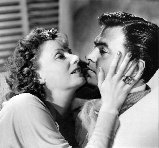
Made by Nici.
|
| |
 The Eternal Flame – This is a silent film with Norma Talmadge made in USA 1922. The film exists only partially. The Eternal Flame – This is a silent film with Norma Talmadge made in USA 1922. The film exists only partially.
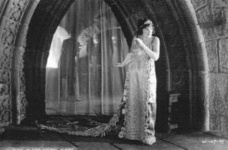
Still from The Eternal Flame
 Liebe / Die Herzogin von Langelais – Another silent film based on the Balzac novel. It starres Elisabeth Bergner and was made in Germany 1927. Liebe / Die Herzogin von Langelais – Another silent film based on the Balzac novel. It starres Elisabeth Bergner and was made in Germany 1927.
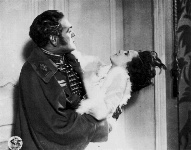
Elisabeth Bergner in Liebe (Love)
 La Duchesse de Langeais – This French film from 1942 was directed by Jacques de Barobcelli and starred Edwige Feuillere as the tragic Duchess. Garbo had admiration for Edwige. Wanger arranged a private screening of the film in Paris 1948. La Duchesse de Langeais – This French film from 1942 was directed by Jacques de Barobcelli and starred Edwige Feuillere as the tragic Duchess. Garbo had admiration for Edwige. Wanger arranged a private screening of the film in Paris 1948.
  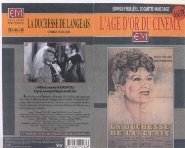
Poster art from the 1942 film
 La Duchesse de Langeais – This is a French TV film from 1995. It stars Laure Duthilleul as the Duchess. La Duchesse de Langeais – This is a French TV film from 1995. It stars Laure Duthilleul as the Duchess.
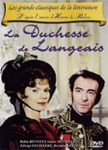
DVD cover
 Ne touchez pas la hache – Made in France 2007. The movie is a cinematographic translation of Balzac's La Duchesse de Langeais and is absolutely faithful to Balzac novel. Jeanne Balibar and Guillaume Depardieu are playing the lead characters. Ne touchez pas la hache – Made in France 2007. The movie is a cinematographic translation of Balzac's La Duchesse de Langeais and is absolutely faithful to Balzac novel. Jeanne Balibar and Guillaume Depardieu are playing the lead characters.
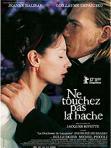 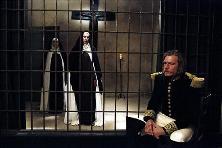 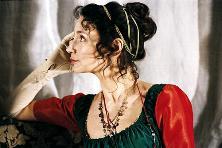
DVD cover and stills
|
| AD CAMPAIN SLOGAN |
| Garbo's Back !
|
| DID SHE FILM A COLOR TEST? |
A never dying 'Fan rumor' is that she filmed a test in color. We contacted Garbo author Mark A. Vieira and he told us in August 2014 that this is not very likely! If Technicolor tests were made at Universal for the cancelled Walter Wanger production (‘Lover and Friend’ aka ‘The Duchess de Langeais’), they would have been found with the other Walter Wanger tests (Howe, Daniels, Valentine). There was no color there. If such a thing existed, it would have turned up in some form. Frame enlargements from the Wanger tests started showing up more than thirty years ago. They were no secret. So, now we have it confirmed. No color film tests were made.
|
| THE ORIGINAL NOVEL |
|
Based on the novel La Duchess de Langelais (The Duchess of Langelais), by H. de Balzac.
You can find an "Internet" version of the Book HERE!
|
| HONORE DE BALZAC |
Balzac (1799 –1850), born Honoré de Balzac, was a nineteenth-century French novelist and playwright. His work, much of which is a sequence (or Roman-fleuve) of almost 100 novels and plays collectively entitled La Comédie humaine, is a broad, often satirical panorama of French society. Garbo's Duchesse was scheduled to be premiered the first quarter of 1950, Balzac's centennial.

Honoré de Balzac |
| |
SOURCES |
|
|
Karen Swenson – A life Apart
Barry Paris – Garbo
IMDB – International Movie Database
plus many other books, magazines and internet sites. |
|